Pentax K-5 IIs Review
Pentax K-5 IIs Introduction
With the K-5 IIs, Pentax has the most feature-rich DSLR currently available - again. This DSLR camera boasts built-in stabilization, automatic horizon correction, a dual-axis digital level, class-leading weather-sealing, a large 100% coverage viewfinder, a 3" LCD with 921K pixels, ISO up to 51200, 7 FPS continuous shooting, live-view and a wealth of unique photographic controls and image parameters. All this in a sturdy and relatively compact pro body. In addition to its photographic capabilities, the Pentax K-5 records full 1080p HD movies, either with a built-in mono microphone or an external stereo one.
The Pentax K-5 IIs was launched simultaneously with the K-5 II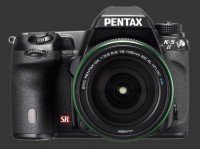
Pentax K-5 II. The unique difference is that the K-5 IIs reviewed here does not have an Anti-Alias filter in front of its image-sensor. This maximizes image sharpness at the risk of occasional moire for some subjects with finely repeated patterns. This approach is the same that Nikon used to distinguish between their D800E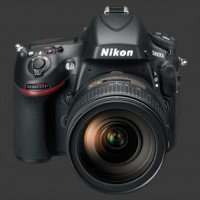
Nikon D800E and D800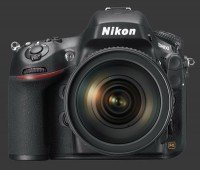
Nikon D800 full-frame DSLRs.
NOTE As the Pentax K-5 IIs is virtually identical to the K-5
Pentax K-5, the first two pages of this detailed review are almost identical to those in the K-5 review. For differences and performance go directly to the performance page.
This review takes a close look at the Pentax K-5 IIs in terms of features, ergonomics, usability, performance, image quality and unique photographic controls.
Pentax K-5 IIs Features
Image Sensor
- 16 Megapixels CMOS image sensor
- No Anti-Alias Filter
- 1.5X crop-factor, APS-C size
- Pentax K-mount (KAF2)
- Built-in Shake-Reduction
- Automatic Horizon Correction ±2°
- Horizontal tilt and shift Composition Adjustment
- Built-in Dust-Reduction
- Standard ISO 100 to 12800 range
- Expanded ISO 80 to 51200 range
- Automatic ISO with selectable min and max
- JPEG, RAW and JPEG+RAW output
- Pentax PEF or Adobe DNG RAW format
- In-camera RAW recovery for last JPEG
Exposure
- Full PASM manual-controls
- Program-Shift and 5 Program-Lines in P mode
- Unique Hyper-Program, Sensitivity-Priority, Hyper-Manual and Shutter-Aperture-Priority modes
- 1/8000s to 30s shutter-speeds, plus Bulb mode
- Exposure-Compensation, -5..+5 EV, 1/2 EV increments or 1/3 EV increments
- Flash-Compensation, -2..+1 EV, 1/2 EV increments or 1/3 EV increments
- Multi-Segment, Center-Weighed and Spot metering
- AEB, 2, 3 or 5 images, 0.3 to 2 EV increments, optionally delayed or remote triggered
Focus & Drive
- 11-Point auto-focus system with 9 cross-type points. Sensitive down to -3 EV
- AF-Point selection: Automatic, Manual or Center
- Single-Shot, Continuous and Manual focus
- 7 FPS Continuous drive, maximum 30 JPEG images or 20 RAW files
- Unlimited 1.6 FPS continuous drive
- Self-Timers: 12s and 2s with automatic MLU
- Remote Trigger: Instant, 3s Delay or Continuous
- Manual or remote MLU
- Multiple-Exposure, 2-9 shots, optional Auto Gain
- Interval-Timer, 2-999 shots, 1s - 24h interval, delayed start time 1m-23h59m
- Automatic HDR from 3 shot-bracket, 3 step sizes, optional Auto Alignment
- Optional Catch-In focus
- Optional AF-Assist light
- Optional AF Fine-Tuning, 21 steps
Image Parameters
- Automatic Strong or Subtle correction available., Preset, Kelvin and Custom white-balance, all fine-tunable
- WB Fine-Tuning in 15 steps along 2 axis
- 9 Custom Image modes
- Adjustable Saturation, Hue, Contrast, Highlight Contrast, Shadow Contrast, Key, 9-steps each
- Adjustable Sharpness, 9 steps along 3 scales
- White-balance, saturation, hue, key, contrast and sharpness virtual bracketing, 3 images
- Optional Highlight Correction
- Optional Noise-Reduction, 3 levels per ISO
- Optional slow-shutter Noise-Reduction
- Optional Optical Distortion and Chromatic Aberration correction
- Optional Pixel Mapping
- Dust Alert, scans for sensor-dust
- In-camera RAW conversion, single and batch
Viewfinder & Displays
- 100% Viewfinder coverage 0.92X magnification
- 3” LCD 921K Pixels, 160 degree viewing-angle. Gapless & recessed design
- Illuminated top LCD status display
- Single-Axis Digital-Level in viewfinder
- Dual-Axis Digital-Level in Live-View
- Optical Depth-of-Field and Digital preview
- Digital White-Balance preview
- Instant Image-Review with magnification
- Luminance and RGB review histograms
- Interactive and static status display
Controls
- Dual Control-Dials
- Configurable AE-L button
- Auto-Exposure-Lock (AEL), Auto-Focus-Lock (AFL) and auto-focus (AF) override
- Direct ISO control in Sensitivity-Priority and optionally in Aperture-Priority and Shutter-Priority
- Modal Exposure-Mode dial
- Modal Metering-Mode dial
- Customizable RAW/Fx button
- Customizable camera memory
- User mode, 5 memories
Body & Construction
- Weather-sealed body
- Freeze-proof down to -10C (14F)
- Dual IR remote receivers
- Built-in pop-up flash (GN 13)
- On, Redeye, Slow-Sync, Rear Slow-Sync, Rear-Sync & Wireless flash modes
- Hot-Shoe and sync-port for external lighting
- Lithium-ion battery
- SDXC memory card support
- Metal tripod mount
- 1080i HDMI output
- Optional GPS unit with Astro-Tracer, Digital Compass and Navigation
Video
- 1920x1080 @ 25 FPS 16:9 HD Video
- 1280x720 @ 30 or 25 FPS 16:9 HD Video
- 640x480 @ 30 or 25 FPS 4:3 VGA Video
- M-JPEG Compress, 3 quality-levels
- Built-In mono microphone and mini-jack for external stereo audio source
- Dedicated mode with optional aperture control
- Optional sound
Pentax K-5 IIs Suitability - What is it good for?
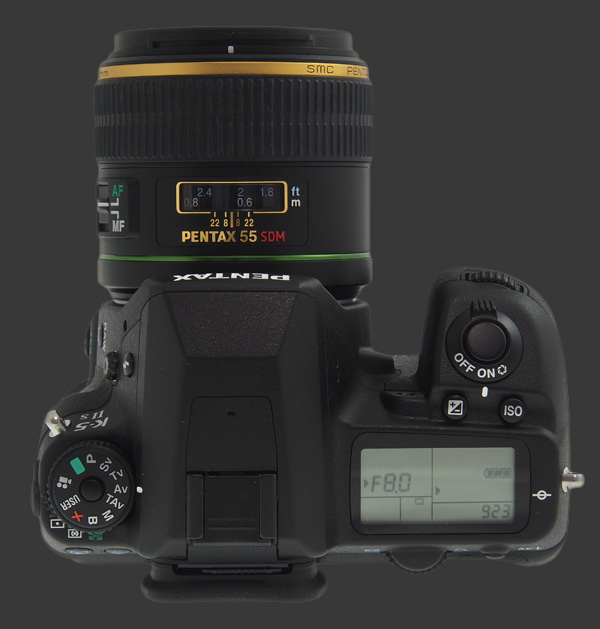
Since DSLR cameras represent the high-end of digital cameras, they are generally suitable for most types of photography. The versatility of interchangeable lenses brings SLR cameras their greatest potential. The Pentax K-5 IIs is no exception, it is suitable for every type of photographic subject.
Feature-wise, the K-5 IIs has just about everything. Other DSLR models distinguish themselves mostly by the choice of lenses available to them and their performance. The traditional weak-point of Pentax cameras offering slower continuous shooting speed no longer applies with only a handful of models shooting faster. Reaching as high as ISO 51200 combined with image stabilization makes the K-5 IIs the ultimate low-light digital camera for still subjects. For moving subjects, the Nikon D4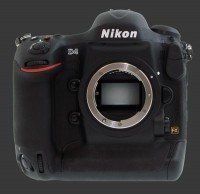
Nikon D4 is the low-light champion due to its unmatched ultra-high ISO capabilities. However, the D4 is considerably more bulky and expensive.
For specific photographic subjects, lens versatility is quite important. While the Pentax K-5 IIs supports an incredibly large collection of lenses, most of these lenses are no longer in production. In terms of modern lenses, Pentax offers a rather small lineup, certainly smaller than those of Canon and Nikon.
The Pentax K-5 IIs has a weather-sealed body that makes it more suitable for rough environments and extra resistant to cold temperatures. Compared to its competitors, the K-5 IIs is relatively compact, making it more suitable for discreet shooting, assuming use of a smallish lens. The Pentax K-5 family and mid-range Pentax K-30
Pentax K-30 are currently the smallest weather-sealed DSLRs with 100% coverage viewfinders.
Pentax K-5 IIs Capability - What can it do?
As noted in the introduction, the Pentax K-5 IIs has everything expected from a modern DSLR plus a very impressive list of extra features. Headline features include built-in image stabilization, automatic horizon correction, dual-axis digital level, dust-reduction, a cold-resistant weather-proof body, 7 FPS continuous drive, 1080p HD movie-mode and live-view. Built-in stabilization is not only a cost-saving feature, it works with all lenses, even those without any stabilized counterparts such as prime, bright, tilt-shift and fish-eye lenses.
The Pentax K-5 IIs's power-switch has 3 positions: off, on and preview. The preview position is used for depth-of-field preview and digital preview. In all shooting modes, the behavior of the preview button is controlled by a setup option. Depth-of-field preview simply stops down the lens aperture to the one metered or set manually, this is the usual behavior. Digital preview takes a picture and shows it on the LCD before optionally storing it. Those who would like quick access to both optical and digital previews, can program the RAW button to show the digital one, leaving the switch around the shutter for optical preview. Digital preview is cleverly used when setting white-balance and image parameters. This is an innovative way to ensure that the proper white-balance is selected. While scrolling through white-balance options and fine-tuning white-balance, the preview image is updated accordingly. Finding the right preset white-balance and tweaking it further is more time-consuming on DSLR cameras without this feature unless using a color-accurate live-view mode.
The shutter-release on this DSLR is a standard 2-stage release with a soft halfway point. By default, pressing the shutter-release halfway locks focus but not exposure. It can be locked using a dedicated AEL-button or by the halfway press when a custom option is set. Focus can also be locked by a separate AF-button which can be configured to disable auto-focus instead. When exposure is locked, whether using the AEL-button or half-pressing the shutter-release, an asterisk is displayed in the viewfinder. This is an important indication of which behavior is in effect.

Live-View on the Pentax K-5 IIs is toggled by a dedicated button. During Live-View, the LCD displays a preview of 100% coverage, accurate focus, colors and white-balance. Unfortunately, exposure is not previewed at all, meaning that it falls short of being WYSIWYG. There are optional histograms and blinking areas but both these options are completely useless as they do not represent the exposure, only what is displayed on the LCD. The extremely helpful dual-axis digital level is displayed in live-view. Most controls are usable in live-view, although, strangely, changing exposure-modes and going into playback mode exits live-view.
Focus in live-view can be done using face-detection, contrast-detection or phase-detection. The first two options use the sensor to determine if something is in focus or not. When focusing with either of these methods, the preview zooms into the chosen area to help judge focus accuracy. When using phase-detection, the display naturally goes blank for a second or so. When the camera has locked focus, the preview appears again and the camera highlights the chosen focus areas.
The greatest thing about the K-5 IIs is that it helps take better pictures. It does this with a bright 100% coverage viewfinder and automatic horizon correction. This means that the photographer avoids having to crop and rotate images unexpectedly. Rotation is detrimental to image quality and therefore avoiding it helps produce higher quality images. Cropping is not damaging by itself but knowing what is going to be in the frame is a relief to the photographer and maximizes the resolution of resulting images. With the digital-level enabled, the viewfinder shows tilt below the view. Pitch is not shown in the viewfinder but can be seen either in live-view or by using the Info button to select the dual-axis digital-level view.
The mode dial of the Pentax K-5 IIs has 11 set positions. Five of these modes are ubiquitous on modern DSLR cameras: automatic (called Green-mode), program (P), shutter-priority (Tv), aperture-priority (Av) and full manual (M) mode. Notably absent from the mode-dial are scene modes which often control the camera in mysterious ways. The mode-dial has a locking system to prevent accidental changes.
The remaining 6 modes are: Sensitivity-priority (Sv), Shutter-Aperture-priority (TAv), Bulb (B), Flash-synchro (X), User (USER) and movie. Sensitivity-Priority is unique to Pentax DSLRs, letting users directly set ISO sensitivity. Shutter-Aperture-Priority complements Sensitivity-Priority by letting the user select both shutter-speed and aperture, leaving ISO sensitivity up to the camera. Bulb mode keeps the shutter open as long as the shutter-release is pressed, some DSLRs make it part of manual (M) mode. Flash-sync mode keeps the shutter-speed at 1/180 which is the flash-sync speed. User mode is any mode which the user can save along with most camera settings. There are 5 memories within User mode and they can be named individually to easily remember which one is which. A menu option shows which setting is saved for each memory. Movie-mode allows the recording of video clips. Below the mode-dial is the metering selection switch. The standard 3 metering modes are available: Multi-Segment, Center-Weighed and Spot.
Movie-mode on the K-5 IIs enters live-view automatically, immediately showing the correct aspect ratio for the set video resolution. A maximum 1920x1080 @ 25 FPS can be chosen, which is a standard 16:9 wide-screen HD movie mode. The camera can also record, 720p and VGA at either 30 or 25 FPS. Three quality settings are available. Sound can be enabled or disabled. If is enabled, the camera either records mono sound using its internal microphone or stereo sound using an external one connected to the K-5 IIs's mini jack connector. Video playback is possible using the rear LCD, an HDMI device up to 1080i or an analog RCA output, either NTSC or PAL.
The Pentax K-5 IIs has detailed control over white-balance including automatic white-balance, preset white-balanceDaylight, shade, cloudy, tungsten, flash, 4-types of fluorescent and enhanced-color (CTE), custom white-balance and color-temperature. All white-balance options can be fine-tuned in 15-steps from blue to amber and magenta to green. Fine-tuning can be reset to 0 by pressing the green button from the preview screen. The behavior of white-balance presets can be fixed to an exact color-temperature or adjusted by the camera. There is also an option to control if AWB corrects colors subtly or strongly under tungsten lighting.
The Pentax K-5 IIs can bracket exposure for 2, 3 or 5 frames, with increments between 1/3 and 2 EV. The 2-frame bracket option is new to the K-5 IIs and it can be chosen if the second frame is more or less exposed than the set metering. It also supports extended bracketing which produces 3 images from one image capture. Images can vary in white-balance, hue, saturation, high/low-key, contrast or sharpness. Flash compensation from -2 to +1 EV can be set after pressing the Flash Mode (down) button.
This DSLR supports the standard drive modesSingle, continuous, self-timer, remote-control., HDR, multiple exposure and time-lapse. In continuous drive, this Pentax can shoot up to 30 JPEG images or up to 20 RAW (DNG) images. Continuous shooting speed is either 7 FPS or 1.6 FPS. The self-timer can trigger after 2 or 12 seconds. With the 2-second self-timer, the mirror is automatically locked-up. Multiple-exposure can combine between 2 and 9 images with or without automatic exposure adjustment. The time-lapse mode shoots up to 999 images at preset intervals between 1s and 24h. Shooting can start immediately or at a set time during the next 24 hours.
Exposure-Bracketing is part of drive-mode options. Since it cannot be set separately from drive-mode, the K-5 IIs includes bracketing-with-self-timer and bracketing-with-remote-trigger sub-options. The bracketing-with-self-timer option uses a 2s timer with MLU between each shot. The K-5 IIs can customize the RAW button to activate bracketing. This activates the drive-mode selection screen with bracketing chosen. This option only works one way, pressing the customized RAW button a second time displays the bracketing menu again, it does not turn off bracketing. For this reason, many will prefer to set their preferred bracketing mode in one of the user-mode memories.
Every DSLR can produce RAW, JPEG or both types of images but the Pentax K-5 IIs adds three extra features to its RAW support:
- Choice of format between Pentax's PEF or Adobe's DNG. The main difference is that PEF is more precisely suited to the Pentax K-5 IIs while DNG is more portable.
- In-camera RAW development. The difference between capturing JPEG images and processing RAW-images in-camera is that white-balance and image parameters can be adjusted after capture. The K-5 IIs can perform conversion on individual files or in batches.
- RAW Data Recovery: Produces a RAW file for the last JPEG image shot, if it is still in the camera's buffer. This is indicated by an icon representing the AE-L button which is used to save the RAW file. This is prefect to save an otherwise great shot if the WB or some other image parameters were wrong.
 |
Please Support Neocamera
All information on Neocamera is provided free of charge yet running this website is a huge endeavor. Purchases made via affiliate links found throughout the site help keep it running and up-to-date. There is no additional cost to you, so please consider buying via these links to our affilates:
If you found any information on this site valuable and did not purchase via our affiliate links, please considering donating via PayPal:
Any amount will be greatly appreaciated. Thank you for your support!
Pentax K-5 IIs Highlights

Sensor-Size: 24 x 16mm

Actual size when viewed at 100 DPI
| 16 Megapixels DSLR | ISO 80-51200 |
| Pentax K Mount 1.5X FLM | Shutter 1/8000-30s |
| 3-Axis Built-in Stabilization, 3-Stop Improvement | Full manual controls, including Manual Focus |
| 100% Coverage Large Viewfinder | Custom white-balance with 2 axis fine-tuning |
| Auto Horizon Correction 2 Axis Digital Level | Spot-Metering |
| Weatherproof down to -10C | Hot-Shoe & Sync-Port |
| Built-in Dust Reduction | Stereo audio input |
| 7 FPS Drive, 40 Images | Lithium-Ion Battery |
| 1920x1080 @ 25 FPS Video Recording | Secure Digital Extended Capacity |
| 3" LCD 920K Pixels |
Updates
2025.01.18

Fujifilm GFX 2025 Lens Roundup
Lens Review roundup of Fujifilm GFX Medium-Format lenses. Quality, performance and handling of the GF20-35mm F/4R WR, GF30mm F/3.5 Tilt-Shift and the GF55mm F/1.7.
2024.11.18

Best 2024 Photography Gifts for Every Budget
Great gifts for photographers and photo enthusiasts selected for every budget among the best products of 2024.
2024.08.07

Eye Protection Tips for Professional Photographers
The four main considerations for professional photographers regarding eyewear.
2024.07.14

Fujifilm X100VI Review
Flagship fixed-lens compact digital camera with a 40 MP sensor and Image-Stabilization, a first for the series. Retro design featuring dual control-dials, plus direct ISO, Shutter-Speed and EC dials. Its hybrid viewfinder can switch between EVF and OVF mode.
2024.05.09

Fujifilm GFX100 II Review
Flagship 102 Megapixels Medium-Format Mirrorless Digital Camera with 8-Stop 5-Axis IBIS, 8 FPS Drive, 8K Video and 400 MP Super-Resolution capture in a weatherproof and freezeproof body with dual control-dials and dual memory-card slots.
2024.04.03

Fujifilm X-T5 Review
Newest Fujifilm flagship boasting a 40 MP APS-C sensor, 5-axis IBIS with 7-stop efficiency, 15 FPS continuous drive, 6.2K Video capture, dual control-dials and dual SDXC UHS-II slots in a sturdy weatherproof and freezeproof body.
2023.11.20

Best Digital Cameras of 2023
Find out which are the Best Digital Cameras of 2023. All the new Mirrorless Digital Cameras from entry-level to high-end professional.
2023.07.10

Fujifilm X-H2 Review
40 Megapixels APS-C Hybrid Mirrorless Digital Camera with 7-stop IBIS. Fastest shutter ever and 8K video capture. Large builtin EVF with 0.8X magnification and 5.8 MP, plus an Eye-Start Sensor. Packed with features and large number of controls in a weatherproof and freezeproof body.
2023.05.07

Sony FE 20-70mm F/4G Review
Review of the unique Sony FE 20-70mm F/4G lens. The optical zoom of this lens spans ultra-wide-angle and medium focal-length coverage, making it one of the most versatile Full-Frame lenses on the market.
2023.01.15

Huion Inspiroy Dial 2 Review
Review of the Huion Inspiroy Dial 2 tablet, a medium sized drawing surface with dual dials and customizable buttons. Connects via USB-C or Bluetooth 5.0 with Windows, Linux and Android support.
2022.12.08

How to Pack for a Photo Trip
Find out how to pack for a travel photography trip, carry your gear safely while meeting airline regulations.
2022.11.13

Best Digital Cameras of 2022
The best digital cameras of 2022. A short list of the most outstanding models in their respective categories. Choose one for yourself or as a gift.














